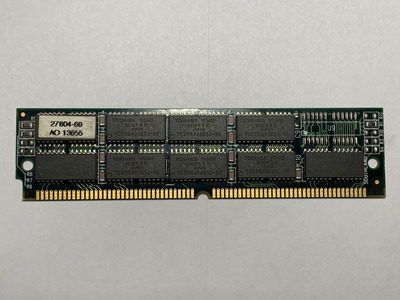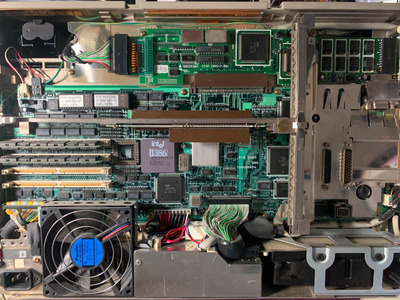First post, by rpocc
I have acquired a handful of SIMM modules which couldn’t be detected by my motherboards. Actually I didn’t tried all of my boards but at least no luck with 82c471-based 486 MB and one very typical Triton-based Pentium MB.
These modules look like the one attached.
What have I found so far:
1. It’s 16 MB with standard 4Mx4 chips, one-sided.
2. It has non-standard pinout, very close to ECC 40-bit SIMM described in US patent #5375084 by IBM which has the whole bunch of pins being reassigned
The patent: https://patents.justia.com/patent/5375084
3. Line 71 ins’t connected. Talking specifically it goes to pads of non-populated resistors on both sides, and on the front side the counterpart pad goes to A11 of each chip, whereas on the back side it goes to a data pin on one chip.
3. I’m not sure if it was 10-chip but all 7 identical modules I have are equipped only with 9 chips. According to absent C9 it seems to be legit.
4. Lines 41-42 are connected to address lines A10-A11 (instead of CAS2 and 3) and not directly but through 33-Ohm resistors.
5. Line 44 (RAS0) is shared between all chips whereas RAS2 is completely disconnected and doesn’t even has vias. It is not very usual configuration by the way as well as CAS0 shared between all 8 modules.
6. The module has markings:
27804-60
AO 13655
120244 Rev. A Southland
Datecode: 1195 USA
What do you think, what kind of MB or equipment these modules are supposed to be used for? Apple, IBM, Sun, disk cache controllers? I’m out of ideas and can’t find any reference on the internet.

